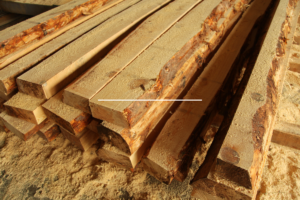 Introduction to Accurate Lumber Takeoff Estimates:
Introduction to Accurate Lumber Takeoff Estimates:
When planning a construction project, having accurate lumber takeoff estimates is crucial to ensuring a smooth and cost-efficient build. A lumber takeoff provides detailed information on the quantity and type of wood materials needed, helping you avoid costly mistakes like over-purchasing or running out of materials mid-project. Inaccurate estimates can lead to delays, additional expenses, and a disruption in workflow, making it essential to get the numbers right from the very beginning.
In this article, we’ll delve into the importance of accurate lumber takeoff estimates, the process involved, the benefits of using technology in takeoff calculations, and some common challenges that can arise if estimates are off the mark.
What Is a Lumber Takeoff?
A lumber takeoff is a critical step in the pre-construction phase of any project involving wood. It’s a process that involves calculating the total amount and specific types of lumber needed for a build. Whether you’re constructing a house, decking, or a larger commercial project, accurate lumber takeoff estimates are vital to ensure you have the right materials in the right amounts.
For example, a lumber takeoff might include:
- The number of studs, beams, and joists
- The lengths and widths of lumber pieces
- Special wood types or treated lumber for specific parts of the project
Without a precise takeoff, you run the risk of overestimating or underestimating the materials needed, which could negatively impact both your budget and timeline.
The Importance of Accurate Lumber Takeoff Estimates
1. Preventing Cost Overruns
Inaccurate lumber estimates can wreak havoc on your project budget. Over-purchasing wood can lead to unnecessary expenses, while under-purchasing can cause delays and force you to make multiple trips to suppliers. Accurate lumber takeoff estimates help you avoid these financial pitfalls, ensuring that your materials match the scope of the project without waste.
2. Streamlining Project Workflow
A clear and accurate takeoff ensures that construction crews have the right materials on hand at the right time. This not only helps prevent delays but also keeps the workflow organized, minimizing downtime and boosting productivity. Crews are able to move seamlessly from one phase of the project to the next, knowing that they have the correct materials ready to use.
3. Reducing Material Waste
Overestimating the amount of lumber required can result in excess materials that may never be used. While some leftovers might be repurposed, most are often wasted, taking up storage space or eventually being discarded. Accurate lumber takeoff estimates significantly reduce this waste, ensuring you only purchase what’s necessary.
4. Improving Environmental Sustainability
Reducing material waste isn’t just good for your budget—it’s good for the environment. By carefully calculating the amount of wood needed, you reduce the environmental impact of your project. Sustainability is increasingly important in the construction industry, and accurate takeoff estimates contribute to more responsible building practices.
The Process of Lumber Takeoff
Creating an accurate lumber takeoff requires precision and attention to detail. While some builders may still rely on manual methods, advances in technology have significantly improved the speed and accuracy of this process. Here’s how the process typically works:
1. Blueprint Review
Before starting any takeoff, you need to have a detailed blueprint or design plan. This gives you the exact specifications for the project, including dimensions, which are vital for determining the amount of lumber required.
2. Itemizing Lumber Needs
Once the blueprint is in hand, the next step is to break down the materials by type and size. This means listing out every piece of lumber required, such as:
- Wall studs
- Roof rafters
- Floor joists
- Beams
You’ll also need to calculate the lengths and types of wood required for different parts of the project, such as exterior walls or framing for doors and windows.
3. Calculating Quantities
Using the specifications from your blueprint, you’ll calculate the quantity of each type of lumber needed. This step requires a lot of precision, as even small miscalculations can lead to significant issues later in the project. Advanced tools, such as construction estimating software, can greatly aid in this process.
4. Double-Checking Estimates
Double-checking the takeoff for accuracy is crucial. Many professionals use software tools to automate calculations, which reduces human error and increases efficiency. However, it’s still a good idea to manually verify the estimates to ensure nothing has been overlooked.
The Role of Technology in Lumber Takeoff
In recent years, digital tools and software have transformed the way construction professionals handle lumber takeoffs. Software such as PlanSwift and Bluebeam Revu can significantly speed up the takeoff process while ensuring more precise calculations.
1. Improved Accuracy
Digital takeoff software calculates exact material quantities based on digital blueprints. These tools use advanced algorithms to minimize errors that can occur with manual calculations, making accurate lumber takeoff estimates easier to achieve.
2. Time Efficiency
What used to take hours or even days to complete manually can now be done in a fraction of the time using modern software. This efficiency not only saves time but also allows you to get projects started more quickly.
3. Customization
Takeoff software also allows for customization based on specific project needs, whether it’s the type of lumber or the dimensions of various building elements. This ensures that your estimates are highly tailored and relevant to the project at hand.
Common Challenges with Inaccurate Lumber Takeoff Estimates
While accurate lumber takeoff estimates are key to a successful project, inaccuracies can arise for several reasons:
1. Misreading Blueprints
If the blueprint is unclear or difficult to interpret, there’s a higher likelihood of miscalculations in the takeoff process. Ensuring that you have detailed and easily readable plans is essential.
2. Human Error
When performing manual takeoffs, human error can often creep in, whether it’s an oversight, a miscalculation, or a misunderstanding of the project requirements.
3. Fluctuating Material Costs
Lumber prices can fluctuate, and even the most accurate takeoff may need to account for potential changes in material costs, which can affect your overall budget.
Accurate lumber takeoff estimates are crucial for the success of any construction project. They prevent costly mistakes, streamline the workflow, and ensure that materials are used efficiently. With the help of modern technology, you can enhance the accuracy of your takeoffs and save time and money in the process. By focusing on precision, you’ll avoid many of the common pitfalls that can derail a project and ensure that your build runs smoothly from start to finish.
Are you looking for the best estimating services in USA?
Look no further than “https://zionestimating.com”
They are offering top-notch services like;
- Construction/cost estimation
- Budget planning
- Material takeoff
- Equipment estimation
and further more!!!
Here are some more information for your convenience:
Phone no. : +1 718-427-9941 || +1 562-383-6177
Email:[email protected]
Visit their blogs and site
https://zionestimating.com for the latest updates and service tips!
